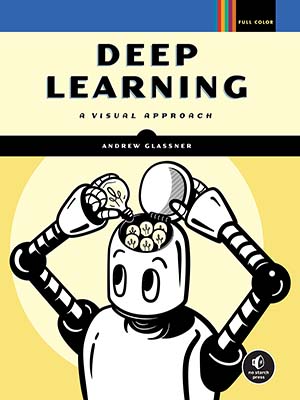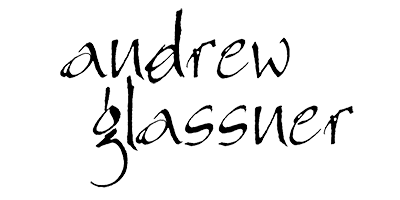Deep Learning: A Visual Approach
 I am 10 kinds of excited to announce that this labor of love is finally complete and ready for you to read!
I am 10 kinds of excited to announce that this labor of love is finally complete and ready for you to read!
It’s a complete and friendly guide for programmers, artists, scientists, engineers, musicians, and anyone else who wants to understand and use deep learning. The book’s principles are clear explanations, lots of great illustrations, and no math beyond addition and multiplication. The ideas are applicable to any language or library you want to use. You’ll know how to design, build, and use existing and original DL networks, and how to make them work for you. If you’re looking for a complete but gentle guide to deep learning, starting with no expectations and then bringing you up to today’s powerful systems, you’ve found it!
Although the writing is friendly and informal, the material in the book is both up to date and complete. We go into depth on everything we cover. Whether you’re a manager, someone who works with data scientists, or you want to write code and use deep learning on your own projects, this book will get you there.
Order your own physical or electronic copy from your favorite bookseller, Amazon, or directly from my wonderful publisher, No Starch Press.
Friendly Writing
The book uses the same friendly and lucid tone that thousands of readers have enjoyed in my other books, papers, and my computer graphics column.
Enthusiastically Illustrated
Great illustrations can share some ideas better than words. The book contains nearly 900 expertly conceived and executed images. Visual thinkers, rejoice! If you need illustrations for your talks or papers, all the figures are available now, for free, for you to use any way you like! Hop over to the GitHub repository here.
Language and Library Independent
Nothing is tied to any particular language or library. We’re all about the ideas, which apply to whatever system you want to use (including your own!).
No Prerequisites
If you can multiply and know how to write “Hello World” in any computer language, you’re ready for this book. Nothing else is assumed, and everything is included. If you want to get the most out of the two practical chapters, a bit of Python knowledge will go a long way.
No Math
Well, there’s some addition and multiplication, but that’s it! We don’t have any big equations or heavy math. Instead, we present everything with straightforward discussions and examples, and tons of images.
Jupyter Notebooks Included
For those into Python, we include over 70 Jupyter notebooks! They contain the code for the practical chapters on scikit-learn and Keras, and also give you the code to make every computer-generated figure in the book. You can even download the notebooks right now, for free, at my GitHub repository here.
Table of Contents
- Part I: Foundational Ideas
- 1 An Overview of Machine Learning
- 2 Essential Statistics
- 3 Measuring Performance
- 4 Bayes’ Rule
- 5 Curves And Surfaces
- 6 Information Theory
- Part II: Basic Machine Learning
- 7 Classification
- 8 Training And Testing
- 9 Overfitting And Underfitting
- 10 Data Preparation
- 11 Classifiers
- 12 Ensembles
- Part III: Deep Learning Basics
- 13 Neural Networks
- 14 Backpropagation
- 15 Optimizers
- Part IV: Beyond The Basics
- 16 Convolutional Neural Networks
- 17 Convnets in Practice
- 18 Autoencoders
- 19 Recurrent Neural Networks
- 20 Attention and Transformers
- 21 Reinforcement Learning
- 22 Generative Adversarial Networks
- 23 Creative Applications
The book is available now! Just click here.
